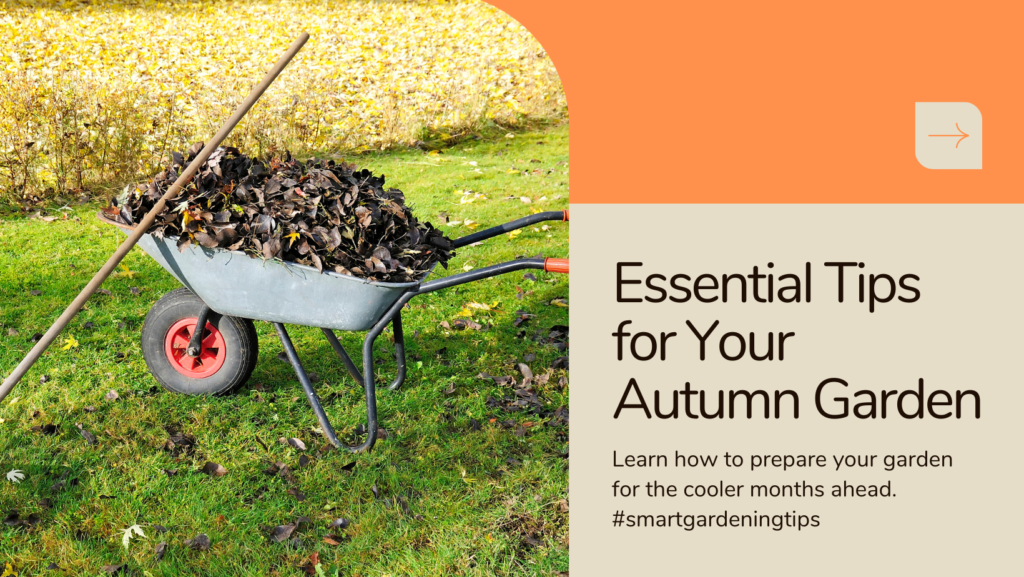
As the fall season approaches, it’s time to prepare your garden for the changes ahead. Autumn gardening is essential to foster plant health, protect your green space, and ensure a thriving garden throughout the season. In this article, we will provide you with expert tips and techniques to help you prep your garden and make the most of the autumn months.
Key Takeaways
- Prepping your garden for autumn is crucial to promote plant health and protect your green space.
- Choose the right plant varieties that are well-suited for autumn conditions.
- Proper soil preparation and fertilization techniques are important for optimal plant growth during the fall season.
- Maintain your garden by implementing essential maintenance tasks and pruning techniques tailored for autumn plant care.
- Protect your garden from the challenges of autumn weather and prevent pests and diseases with effective strategies.
Why Autumn Gardening is Important
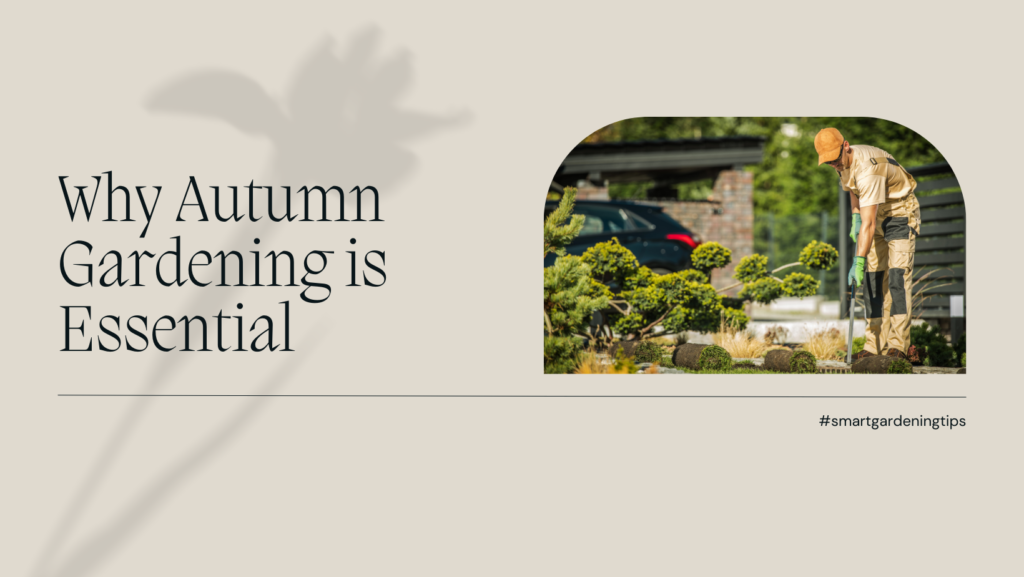
Understanding the importance of autumn gardening is crucial for maintaining the health and vitality of your plants. As the seasons shift and cooler temperatures approach, your garden needs special care and attention to thrive. Autumn gardening is not just about preparing your garden for the colder months; it is an opportunity to foster plant health and ensure the longevity of your green space.
During autumn, plants experience unique challenges and changes in their environment. By implementing proper autumn gardening practices, you can create a strong foundation that encourages robust growth and protects your plants from potential damage.
Autumn is a critical time for plant care. It is the season when plants replenish their energy reserves, develop stronger root systems, and prepare for winter dormancy. A well-maintained garden in autumn sets the stage for lush, healthy growth in the coming spring.
The importance of autumn gardening for plant health cannot be overstated. Here are a few key reasons why autumn gardening is essential:
1. Preparing for the Winter
Autumn is the ideal time to prepare your garden for the harsh winter months ahead. By taking the necessary steps now, such as pruning, mulching, and cleaning up debris, you can protect your plants from cold weather, frost, and other seasonal hazards.
2. Strengthening Root Systems
Autumn is a critical period for root development. By tending to your garden in the fall, you provide plants with the opportunity to establish stronger root systems, making them more resilient and better equipped to absorb nutrients and water.
3. Preventing Pest and Disease Problems
Many pests and diseases are more active during the autumn months. By practicing good gardening habits in the fall, such as removing diseased leaves, controlling weeds, and inspecting plants regularly, you can minimize the risks of infestations and diseases.
4. Enhancing Spring Blooms
Proper autumn gardening sets the stage for beautiful spring blooms. By ensuring that your plants are well-fed, hydrated, and protected during the fall, you provide them with the resources they need to thrive and produce an abundance of colorful flowers when spring arrives.
Autumn gardening is not solely about immediate gratification but rather a long-term investment in the health and longevity of your garden. By recognizing the importance of autumn gardening and implementing the right practices, you can foster plant health, protect your green space, and create a vibrant and flourishing garden year-round.
Preparing Your Garden for the Fall Season
As the fall season approaches, it’s time to start preparing your garden for the changes that lie ahead. Taking the necessary steps now will ensure that your garden remains vibrant and healthy throughout the autumn months. Here are some essential tips to help you prepare your garden for the fall season:
Clear Out Summer Growth
Begin by clearing out any remaining summer plants that have reached the end of their blooming cycle. Remove wilted flowers, dry leaves, and any other debris that may have accumulated in your garden. This will not only create space for new plantings but also prevent pests and diseases from spreading.
Trim and Prune
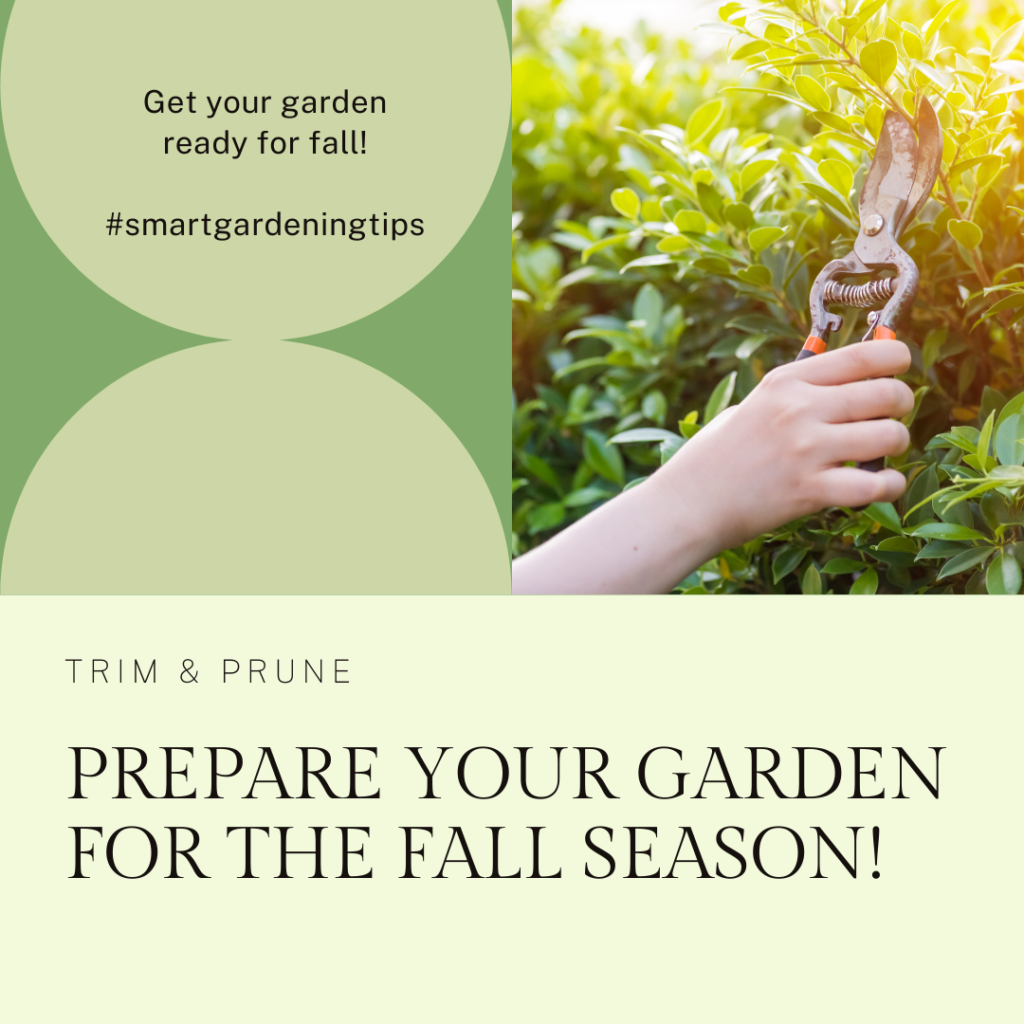
Inspect your existing plants and shrubs to determine if they require any trimming or pruning. Trim back overgrown branches and remove any dead or diseased foliage. Pruning will promote healthy growth and shape your plants for the coming season.
Amend the Soil
Preparing the soil is crucial for the success of your autumn garden. Add organic matter such as compost or well-rotted manure to enrich the soil and improve its structure. This will provide essential nutrients for your plants and enhance water retention.
Plant Cool-Season Crops
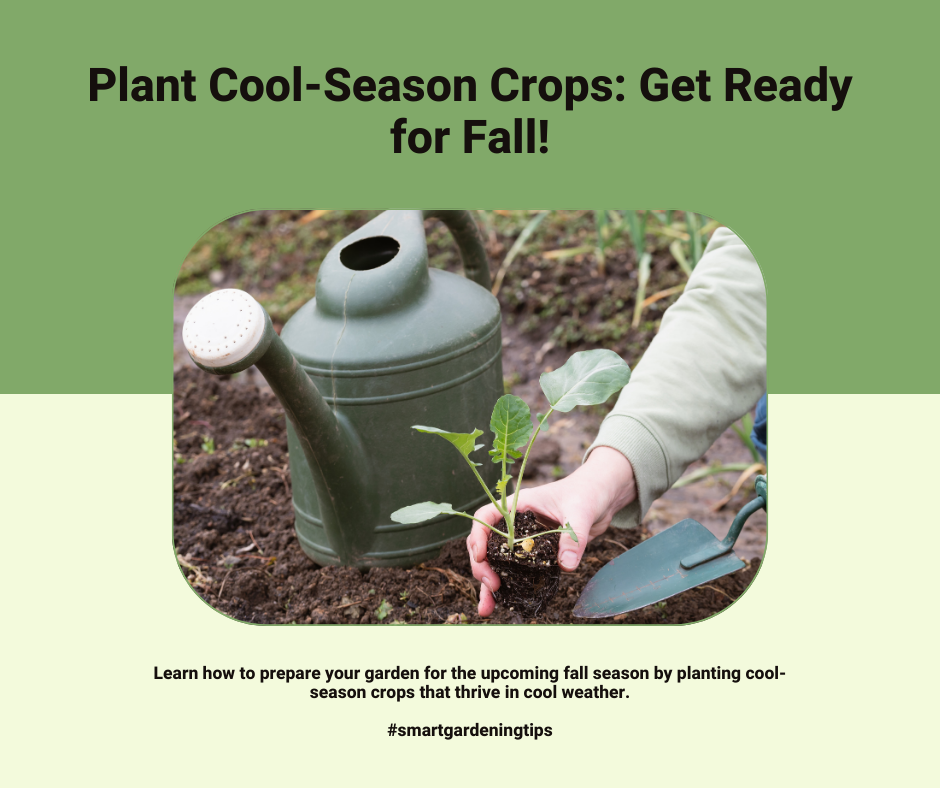
Take advantage of the cooler temperatures by planting cool-season crops such as lettuce, kale, spinach, and carrots. These vegetables thrive in autumn conditions and will provide a fresh and nutritious harvest as the season progresses.
Protect Your Plants
As the weather changes, it’s important to protect your plants from frost and chilly winds. Consider using frost cloths or row covers to shield delicate plants during cold nights. Mulching around the base of your plants can also help regulate soil temperatures and prevent moisture loss.
“Preparing your garden for the fall season is essential to ensure the health and vitality of your plants. By clearing out summer growth, trimming and pruning, amending the soil, planting cool-season crops, and protecting your plants, you’ll set the foundation for a successful autumn garden.”
Recommended Plants for Autumn Gardening
| Plant | USDA Hardiness Zone |
|---|---|
| Dahlia | Zones 7-11 |
| Aster | Zones 4-8 |
| Pansy | Zones 4-8 |
| Chrysanthemum | Zones 5-9 |
| Rudbeckia | Zones 3-9 |
These plants are known for their ability to withstand cooler temperatures and enhance the beauty of your autumn garden. Be sure to check the specific care requirements for each plant to ensure optimal growth and blooming.
Choosing the Right Plants for Autumn
Certain plants thrive better in autumn conditions. As the weather begins to cool and the days become shorter, it’s important to choose plant varieties that are well-suited for this season. Whether you’re looking to add vibrant colors or enjoy fresh harvests during autumn, selecting the right plants for your garden is essential.
1. Flowering Plants
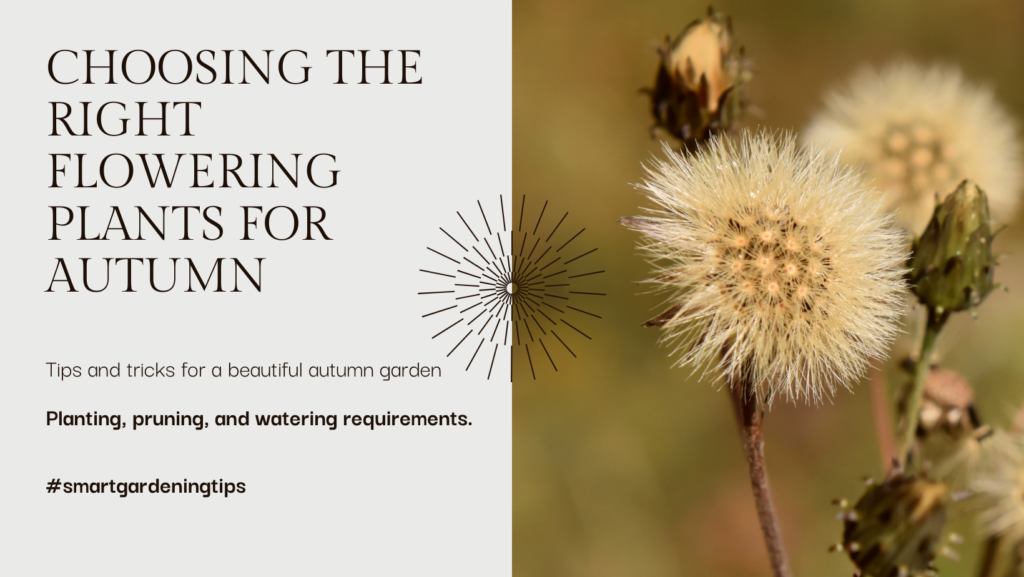
Incorporate flowering plants that are known for their autumn blooms. These plants not only add visual interest but also attract pollinators to your garden. Consider varieties such as asters, chrysanthemums, and ornamental grasses. Their vibrant colors and unique textures will enhance the beauty of your outdoor space.
2. Fall Foliage
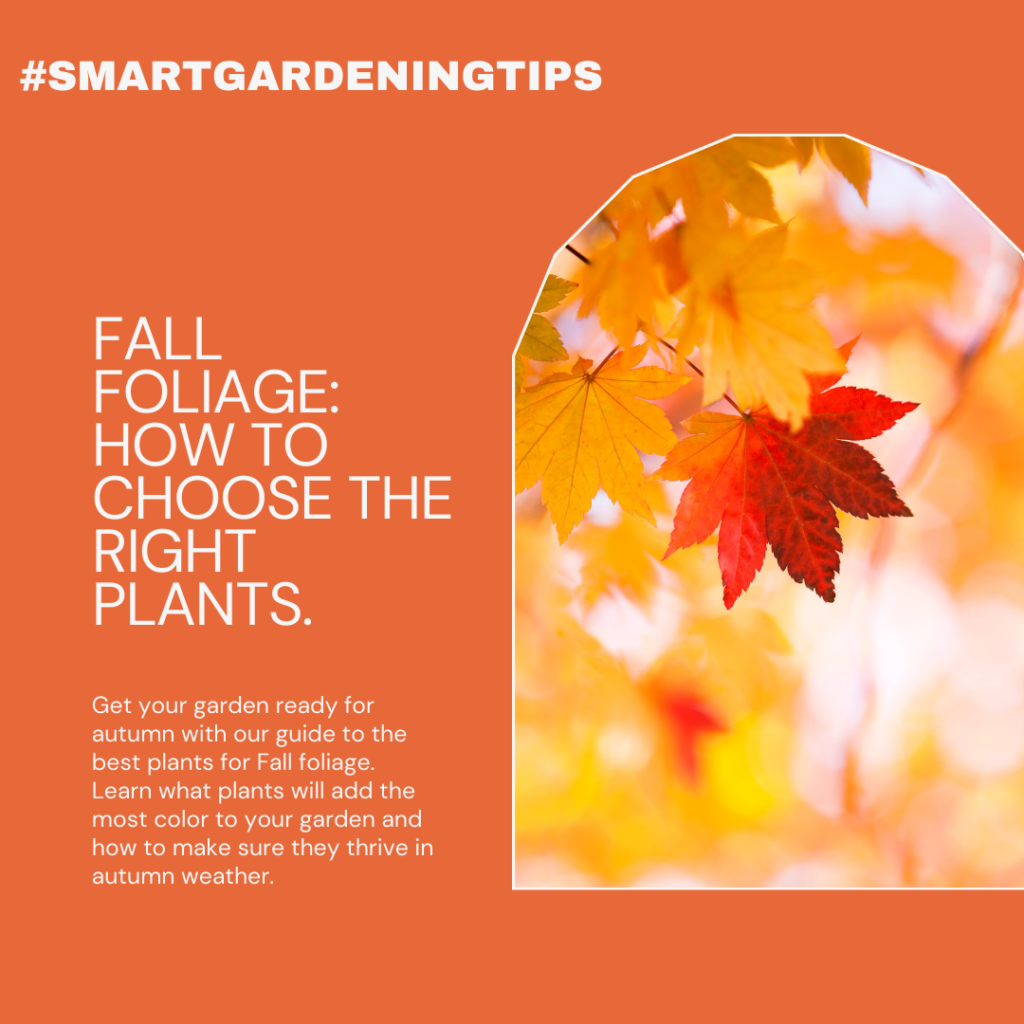
Add plants that showcase stunning fall foliage to create a tapestry of colors in your garden. Trees like maples, birches, and oaks are renowned for their rich autumnal hues. Additionally, shrubs like burning bush (Euonymus alatus) and Virginia sweetspire (Itea virginica) provide brilliant reds and oranges, adding warmth to your garden.
3. Edible Plants
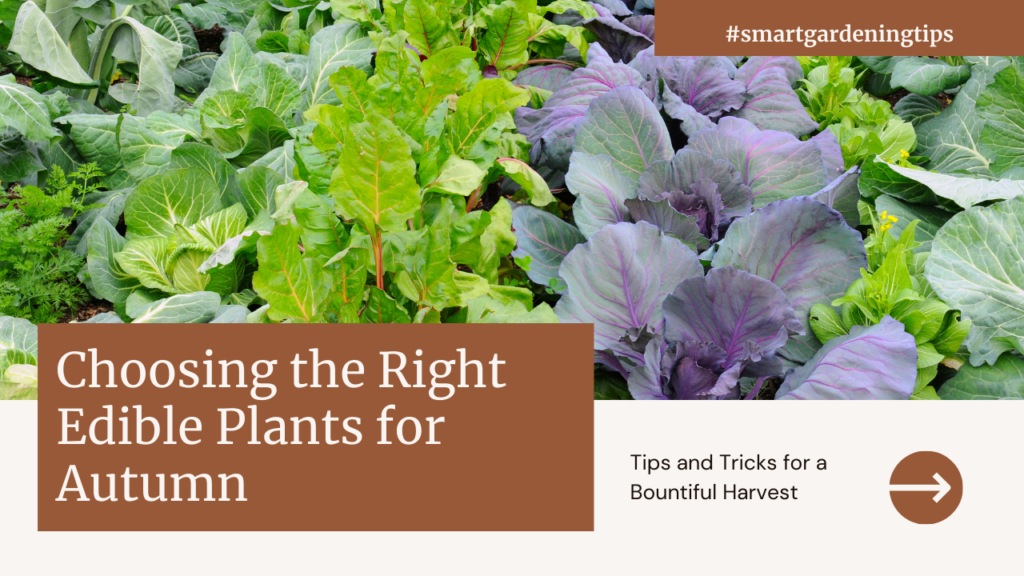
Autumn is a great time to grow and harvest certain edible plants. Consider planting cool-season vegetables such as kale, spinach, and lettuce. These varieties thrive in the cooler temperatures and can be harvested well into the fall season. Additionally, herbs like sage, thyme, and rosemary can add flavor and fragrance to your autumn dishes.
4. Evergreen Plants
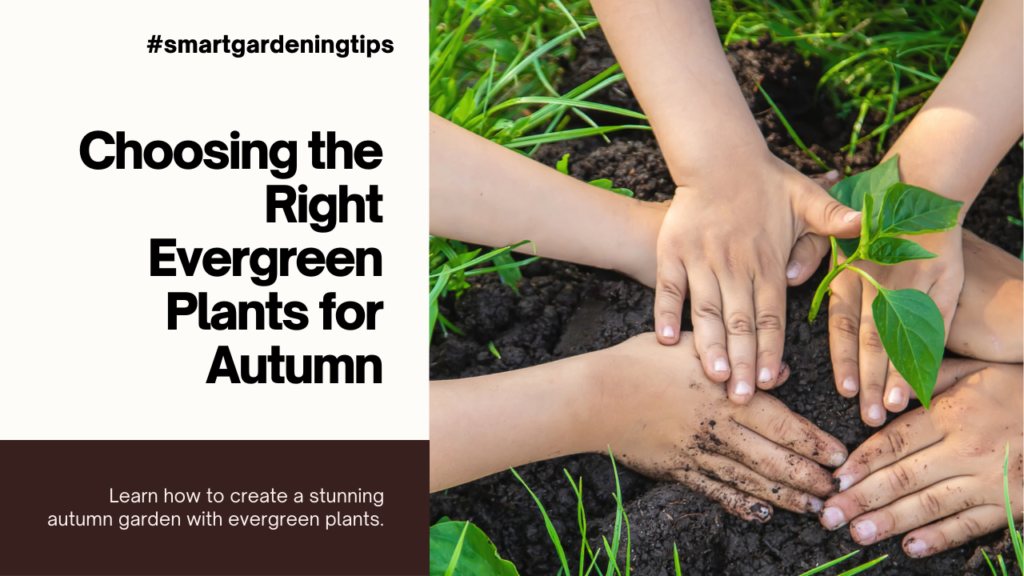
Include evergreen plants in your autumn garden to maintain year-round foliage and structure. These plants provide an attractive backdrop for other flowering or foliage plants. Some popular evergreen choices include boxwoods, hollies, and junipers.
Remember to consider your local climate and growing zone when selecting plants. Not all varieties will thrive in every region. Research the specific growing requirements of each plant to ensure they are suitable for your area.
By carefully choosing the right plants for autumn, you can create a beautiful and vibrant garden that thrives in the cooler temperatures. Be sure to select a variety of flowering plants, fall foliage varieties, edible plants, and evergreens to create a diverse and visually appealing garden.
| Plant Variety | Key Features |
|---|---|
| Aster | Colorful blooms, attracts pollinators |
| Chrysanthemum | Wide range of colors, long-lasting blooms |
| Maple | Rich fall foliage in shades of red, orange, and yellow |
| Burning Bush | Brilliant red foliage, adds warmth to the garden |
| Kale | Edible leaves with a range of textures and colors |
| Boxwood | Compact evergreen shrub, provides year-round structure |
With the right plant selections, your autumn garden can be a stunning display of colors, textures, and flavors. Take the time to research and choose the plants that best suit your garden and climate. By incorporating a variety of flowering plants, foliage varieties, edibles, and evergreens, you’ll create a garden that thrives throughout the fall season and beyond.
Tips for Selecting Autumn-Friendly Plant Varieties
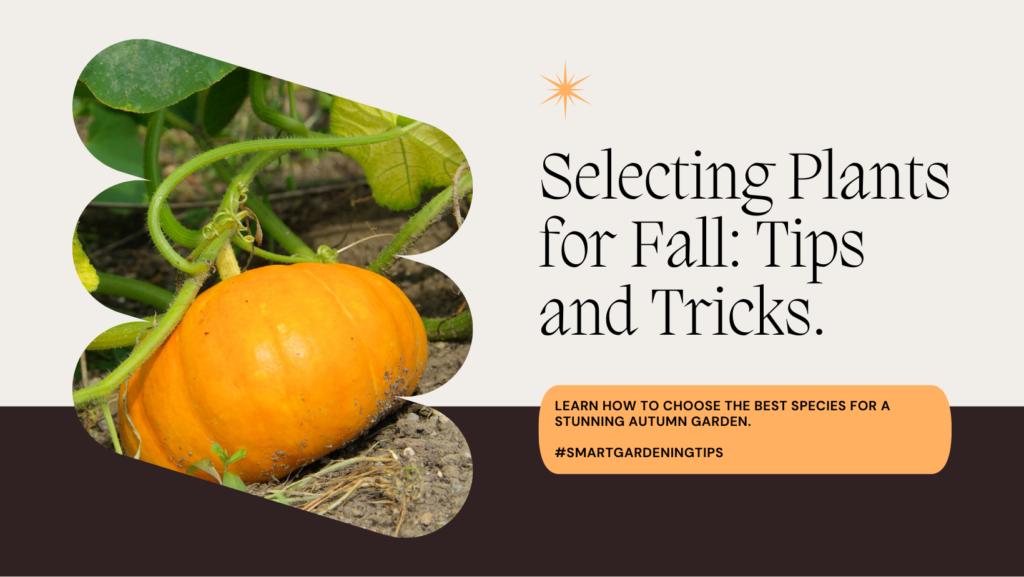
Selecting the right plant varieties is crucial for successful autumn gardening. As the fall season approaches, it’s essential to choose plants that are well-suited for autumn conditions. Not all plants thrive in cooler temperatures and shorter daylight hours, so careful selection will ensure your garden remains vibrant and healthy throughout the season.
Here are some useful tips to help you select autumn-friendly plant varieties:
- Consider the hardiness zone: Different regions have varying climates and temperature ranges. Be sure to choose plants that are suitable for your specific hardiness zone. Check the USDA plant hardiness zone map for guidance.
- Look for plants with extended bloom time: In autumn, shorter daylight hours can affect flowering plants. Opt for varieties that have an extended bloom time to enjoy vibrant colors as long as possible.
- Choose plants with colorful foliage: Fall is known for its beautiful foliage colors. Select plant varieties that offer striking reds, oranges, and yellows to enhance the autumn landscape.
- Consider plants with late-season interest: Some plants offer unique features in autumn, such as interesting seed heads or persistent berries. These can add visual interest to your garden during the cooler months.
- Research plants that tolerate cooler temperatures: Look for plants that are known for their resilience in colder climates. These hardy varieties will withstand chilly autumn nights without compromising their health.
By following these tips, you can confidently choose plant varieties that are well-adapted to autumn conditions. Remember to consider your specific climate, desired blooming period, and the visual impact you want to create in your garden. And don’t hesitate to consult with local garden centers or experts for further guidance in selecting the perfect autumn-friendly plants for your garden.
| Plant Variety | Hardiness Zone | Flower Color | Special Attributes |
|---|---|---|---|
| Marigold | 3-10 | Yellow, Orange | Extended bloom time |
| Purple Coneflower | 3-9 | Purple | Attracts pollinators |
| Russian Sage | 4-9 | Lavender | Fragrant foliage |
| Japanese Maple | 5-8 | Red, Orange | Colorful foliage |
| Beautyberry | 6-9 | Purple | Long-lasting berries |
Table: Examples of Autumn-Friendly Plant Varieties
Soil and Fertilization Tips for Autumn Gardening
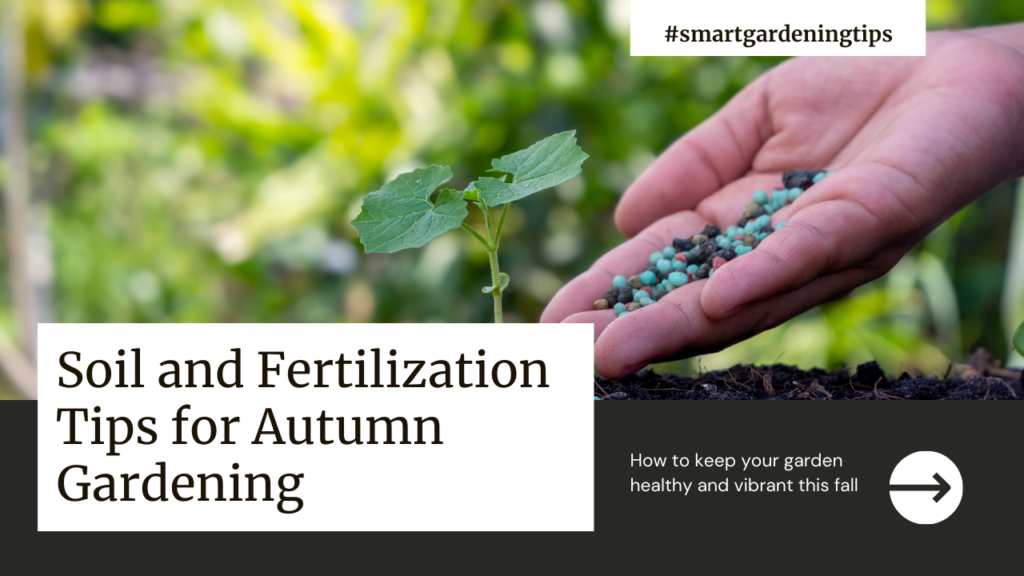
Fall is a crucial time to prepare your soil and implement effective fertilization strategies to ensure optimal plant growth during the autumn season. By following these soil and fertilization tips, you can provide your plants with the nutrients they need to thrive and flourish.
Soil Preparation Techniques for Autumn Gardening
Proper soil preparation is essential for creating a favorable environment for your plants. Here are some techniques to consider:
- Clear the garden: Start by removing any weeds, debris, or old plant material from your garden beds. This will help prevent the growth of unwanted plants and diseases.
- Loosen the soil: Use a garden fork or tiller to break up compacted soil and improve its structure. This will enhance root penetration and allow for better water and nutrient absorption.
- Add organic matter: Incorporate compost, well-rotted manure, or leaf mold into the soil to increase its fertility and improve its moisture-holding capacity. Organic matter also helps enhance soil structure and promotes beneficial microbial activity.
- Test the soil pH: Conduct a soil pH test to determine if any amendments are necessary. Most plants prefer a slightly acidic to neutral pH range (6.0-7.0).
Fertilization Strategies to Boost Plant Growth in the Fall
Applying the right fertilizers can significantly contribute to the overall health and vitality of your plants during the autumn season. Consider the following strategies:
- Choose slow-release fertilizers: Opt for slow-release fertilizers that release nutrients gradually over time. This ensures a steady supply of essential elements and reduces the risk of nutrient leaching.
- Focus on phosphorus and potassium: Use fertilizers with higher phosphorus (P) and potassium (K) content to support root development, flower production, and overall plant vigor. These nutrients are particularly important during the fall season.
- Apply fertilizers at the right time: Follow the recommended application rates and schedule for the specific fertilizers you’re using. Applying fertilizers too late in the fall may not provide the desired benefits, as plants enter dormancy.
- Consider organic options: Organic fertilizers, such as compost, fish emulsion, and bone meal, are excellent alternatives to synthetic fertilizers. They enhance soil health, promote beneficial microbial activity, and reduce the risk of nutrient imbalances.
By incorporating these soil and fertilization tips into your autumn gardening routine, you can create an ideal growing environment for your plants, setting the stage for vibrant growth and a beautiful garden throughout the fall season.
The proper preparation of the soil and the implementation of effective fertilization strategies are crucial for successful autumn gardening. By ensuring your plants have the right nutrients and a well-prepared growing environment, you can promote optimal growth and enhance the overall health of your garden. Remember to clear the garden, loosen the soil, add organic matter, and test the soil pH. Additionally, choose slow-release fertilizers, focus on phosphorus and potassium, apply fertilizers at the right time, and consider organic options for a more sustainable approach.
Maintenance and Pruning Practices
Proper maintenance and pruning are essential for the overall health and appearance of your garden in autumn. By following these maintenance and pruning practices, you can ensure that your plants are well-cared for and ready to thrive during the fall season.
Essential Maintenance Tasks for Autumn Gardening
Autumn is a crucial time to perform certain maintenance tasks to keep your garden in top shape. Here are some essential tasks to prioritize:
- Clean up fallen leaves and debris to prevent disease and provide better access to sunlight for your plants.
- Divide and transplant perennials to promote their growth and create space for new plants.
- Inspect and repair garden structures, such as trellises, fences, and support stakes, to ensure they can withstand the upcoming weather conditions.
- Apply a layer of mulch around your plants to help retain moisture, regulate soil temperature, and prevent weed growth.
- Check and repair irrigation systems to ensure proper watering during the changing weather.
By completing these essential maintenance tasks, you’ll create a strong foundation for your garden to thrive in the autumn season.
Proper Pruning Techniques for Autumn Plant Care
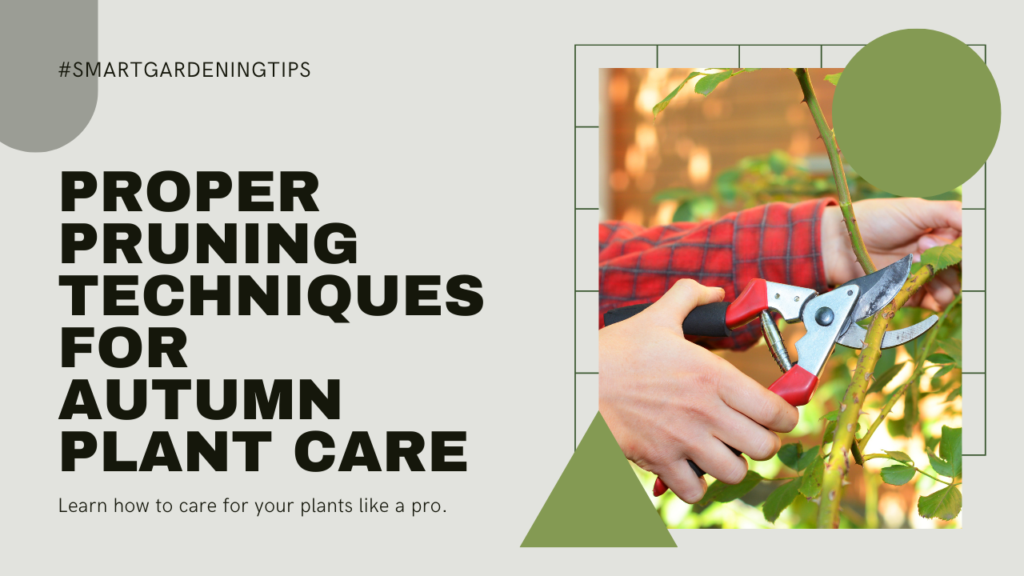
Pruning is a critical aspect of autumn plant care. It helps maintain plant health, control growth, and promote better flowering and fruit production. Here are some proper pruning techniques to follow:
“Pruning in autumn should focus on removing dead, damaged, or diseased branches. Additionally, you can also prune to shape plants and remove any overcrowded or crossing branches. Remember to use clean, sharp pruning shears and make clean cuts just above a bud or branch junction.”
Implementing these proper pruning techniques will promote better plant growth and reduce the risk of pest and disease infestations.
| Benefits of Maintenance and Pruning Practices for Autumn Gardening |
|---|
| Enhances the overall appearance of your garden |
| Encourages proper air circulation and sunlight exposure |
| Promotes optimal plant health and vigor |
| Reduces the risk of disease and pest infestations |
| Improves flowering and fruit production |
By implementing these maintenance and pruning practices in your autumn gardening routine, you’ll ensure that your garden is well-maintained, healthy, and ready to flourish during the fall season.
Protecting Your Garden from Autumn Elements
As the weather transitions into autumn, it’s crucial to shield your garden from the harsh elements that this season brings. The cold weather and other challenges can significantly impact the health and vitality of your plants. To ensure their well-being, here are some effective strategies to protect your garden from autumn elements:
Selecting Resilient Plant Varieties
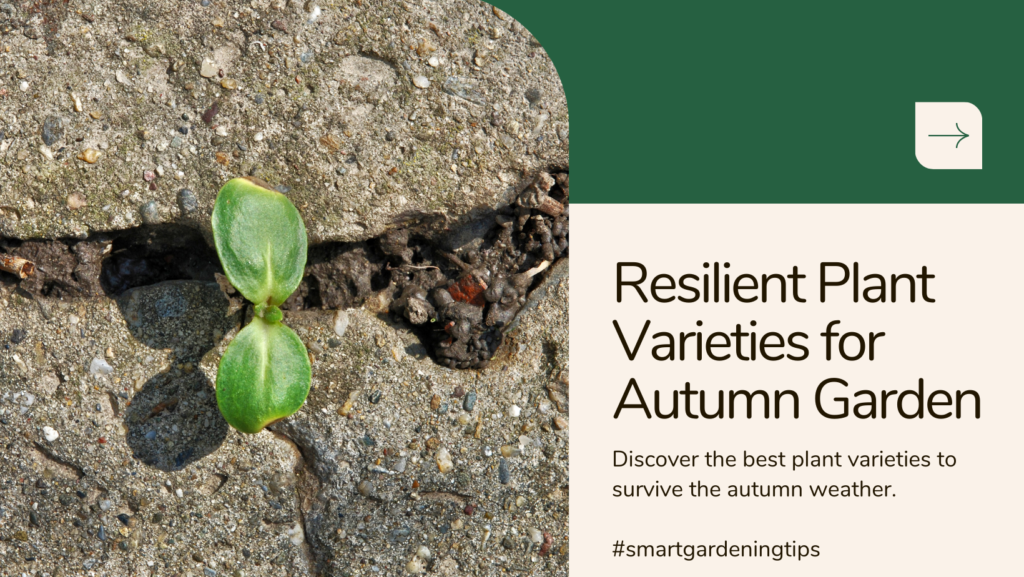
Choosing plant varieties that are naturally adapted to withstand colder temperatures can give your garden a head start in combating autumn’s challenges. Look for plants that are known for their tolerance to cold weather and are suitable for your specific climate. Popular choices include winter pansies, hellebores, and ornamental grasses.
Applying Mulch
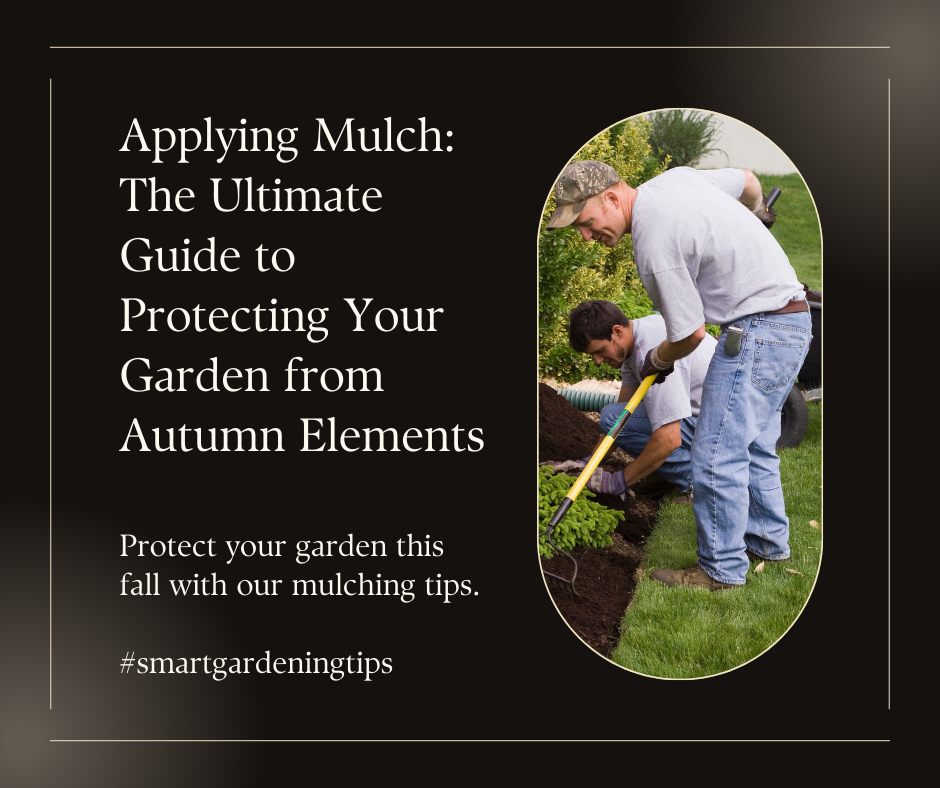
Mulch is a valuable ally when it comes to protecting plants from extreme temperature fluctuations. By applying a layer of mulch around the base of your plants, you can help insulate the roots and minimize moisture loss. Use organic materials like straw or shredded leaves, spreading them evenly around the plants.
Creating Windbreaks

Strong winds can damage delicate plants and strip away moisture from the soil. Establishing windbreaks can provide much-needed protection for your garden. Planting evergreen shrubs or installing a fence can act as physical barriers, reducing the impact of strong gusts and creating a more sheltered environment for your plants.
“A strategically placed windbreak can make a significant difference in protecting your garden from the chilling winds of autumn.” – Gardening expert, Jane Thompson.
Using Protective Covers
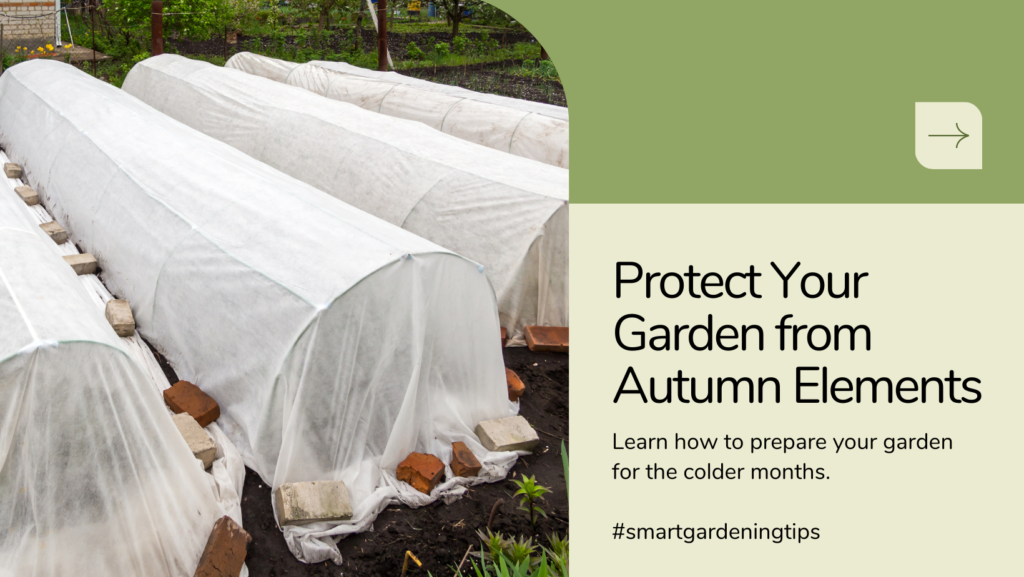
In colder regions, it may be necessary to use protective covers, such as frost blankets or cloches, to shield vulnerable plants from freezing temperatures. These covers trap heat and create a microclimate around the plants, providing insulation and preventing frost damage. Remember to remove the cover during sunny days to allow for ventilation.
Watering Wisely
While it’s important to keep your plants hydrated, be mindful of the changing weather patterns in autumn. Overwatering can lead to root rot, especially in cooler temperatures. Adjust your watering schedule accordingly, and only water when the soil feels dry. This prevents waterlogged soil and helps maintain the optimal moisture level for your plants.
Cold-Weather Resilient Plants for Autumn
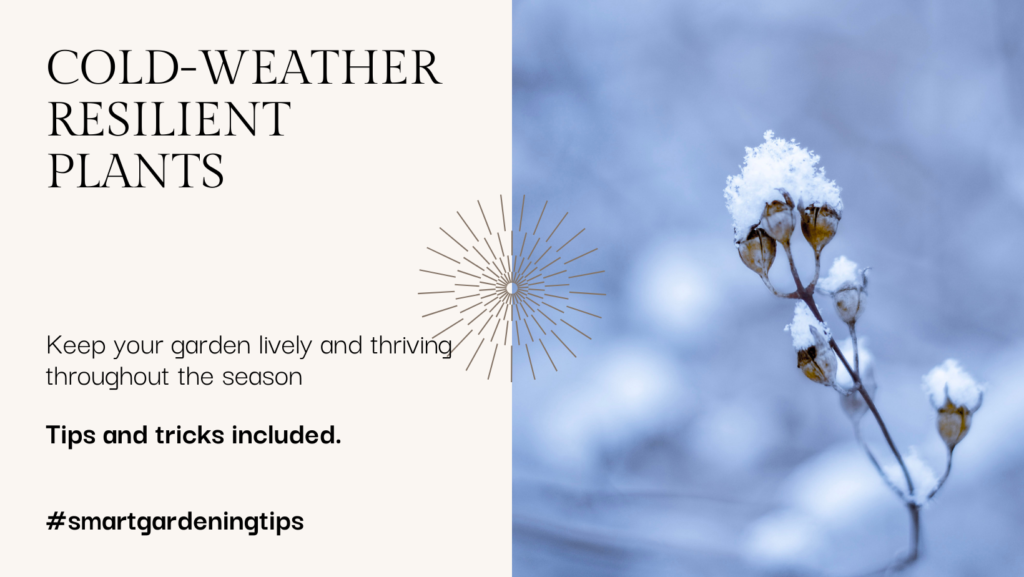
| Plant Name | Hardiness Zone | Characteristics |
|---|---|---|
| Pansies | 3-8 | Colorful blooms, cold-tolerant |
| Hellebores | 4-9 | Evergreen leaves, early blooms |
| Ornamental Grasses | Varies | Tall, graceful, adds texture |
By implementing these strategies, you can protect your garden from autumn elements and ensure the continued health and beauty of your plants. With proper care and preparation, your garden will thrive even in the face of cold weather and other challenges. Happy gardening!
Tips for Preventing Pests and Diseases in Autumn
As the autumn season sets in, it’s important to be proactive in preventing pests and diseases from infesting your garden. Taking preventive measures will help protect your plants and maintain a healthy garden environment. Here are some practical tips to keep your garden free from unwanted pests and diseases during this time of year:
- Keep your garden clean: Clear away fallen leaves, weeds, and debris as they can harbor pests and diseases. Regularly tidy up your garden to create a healthy and clean environment for your plants.
- Monitor plant health: Regularly inspect your plants for any signs of pests or diseases. Look for yellowing leaves, spots, wilting, or any unusual growth patterns. Early detection can help you take immediate action and prevent infestations from spreading.
- Practice proper watering: Overwatering can create favorable conditions for pests and diseases to thrive. Ensure that your plants receive adequate moisture without being saturated. Water at the base of the plants to avoid wetting the foliage excessively.
- Implement crop rotation: Rotate your crops each year to break the cycle of pests and diseases. This practice prevents them from building up in the soil and significantly reduces the risk of infestations.
- Use organic pest control methods: Consider using organic and natural pest control methods to avoid any harmful effects on the environment and beneficial insects. These methods include introducing beneficial insects, using insecticidal soaps, and creating companion planting strategies.
- Provide proper plant nutrition: Maintaining optimal soil fertility and providing the necessary nutrients to your plants can strengthen their immune systems and make them more resistant to pests and diseases. Use organic fertilizers and compost to enrich the soil.
- Practice good hygiene: Clean and disinfect your gardening tools regularly to prevent the spread of pests and diseases. This simple step can help prevent cross-contamination between plants.
By following these preventive measures, you can create a resilient garden that is less susceptible to pests and diseases. Now, let’s take a look at a table summarizing some common pests and diseases to be aware of in autumn:
| Pest/Disease | Symptoms | Prevention |
|---|---|---|
| Spider Mites | – Fine webbing on plants – Discolored leaves – Stunted growth | – Regularly spray plants with water to discourage mites – Apply insecticidal soap as needed |
| Aphids | – Clusters of small, soft-bodied insects on plants – Sticky residue on leaves | – Release ladybugs or lacewings to feed on aphids – Spray plants with a mixture of water and dish soap |
| Powdery Mildew | – White, powdery coating on leaves – Distorted growth | – Provide good air circulation by spacing plants properly – Avoid overhead watering to reduce humidity |
| Leaf Spot | – Dark spots on leaves – Yellowing and dropping of leaves | – Remove infected leaves and dispose of them properly – Avoid overhead watering to minimize leaf wetness |
Remember, prevention is key to a thriving autumn garden. By taking these simple but effective steps, you can protect your plants and ensure a healthy and vibrant garden throughout the season.
FAQ
Q. Why is autumn gardening important?
A. Autumn gardening is important because it helps maintain the health and vitality of your plants. It allows you to prepare your garden for the colder months, promote plant growth, and protect your green space.
Q. How do I prepare my garden for the fall season?
A. To prepare your garden for the fall season, you should clean up debris, remove dead plants, and trim back overgrown foliage. It’s also a good idea to amend the soil, apply mulch, and consider planting cool-season crops.
Q. What types of plants are ideal for autumn gardening?
A. Some plants that thrive in autumn conditions include mums, asters, kale, and pansies. These plants can add color and beauty to your garden during the fall season.
Q. What tips can you provide for selecting autumn-friendly plant varieties?
A. When selecting plant varieties for autumn gardening, choose those that are hardy, frost-tolerant, and have a long blooming season. Look for plants that can withstand temperature fluctuations and adverse weather conditions.
Q. What are some soil and fertilization tips for autumn gardening?
A. Before planting in autumn, it’s important to prepare the soil by removing weeds, loosening the soil, and adding organic matter. Additionally, consider fertilizing your plants with a slow-release fertilizer to promote growth and provide necessary nutrients.
Q. How can I maintain and prune my plants in autumn?
A. In autumn, it’s essential to regularly water your plants, remove dead or diseased foliage, and monitor for pests and diseases. Proper pruning techniques, such as removing dead branches or overcrowded growth, will help maintain plant health.
Q. How can I protect my garden from autumn elements?
A. To protect your garden from autumn elements, you can use protective coverings like mulch, frost blankets, or cloches. Additionally, consider planting cold-hardy plants and providing sufficient water and shelter.
Q. What tips can you provide for preventing pests and diseases in autumn?
A. To prevent pests and diseases in autumn, practice good garden hygiene by removing fallen leaves and debris. Inspect your plants regularly for signs of pests or diseases, and consider using organic pest control methods or beneficial insects to keep them at bay.
Conclusion
In this article, we have explored essential autumn gardening tips to help you prepare and maintain your garden for the fall season. By following these tips, you can foster plant health, protect your green space, and ensure a vibrant and beautiful autumn garden.
From understanding the importance of autumn gardening to selecting the right plants for this season, we have provided you with valuable insights and guidance. We have also discussed soil preparation, fertilization techniques, maintenance tasks, and strategies to protect your garden from autumn elements.
Remember, autumn gardening is a wonderful opportunity to nurture and care for your plants, setting the stage for their growth and beauty in the coming season. So get your gardening tools ready, put on your gloves, and embark on the journey to create a thriving and picturesque autumn garden. Happy gardening!
















